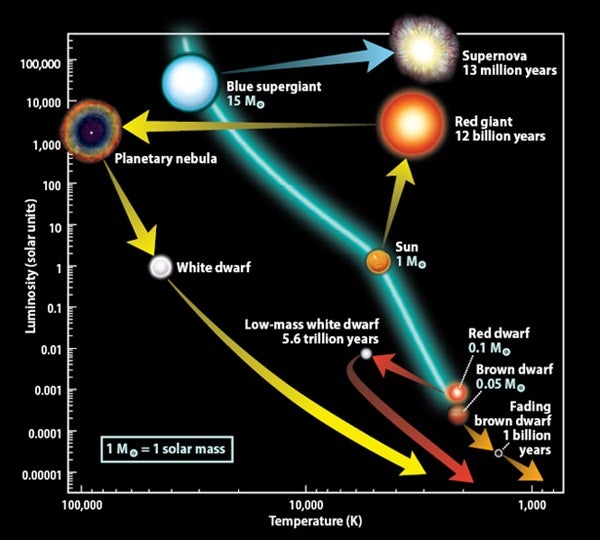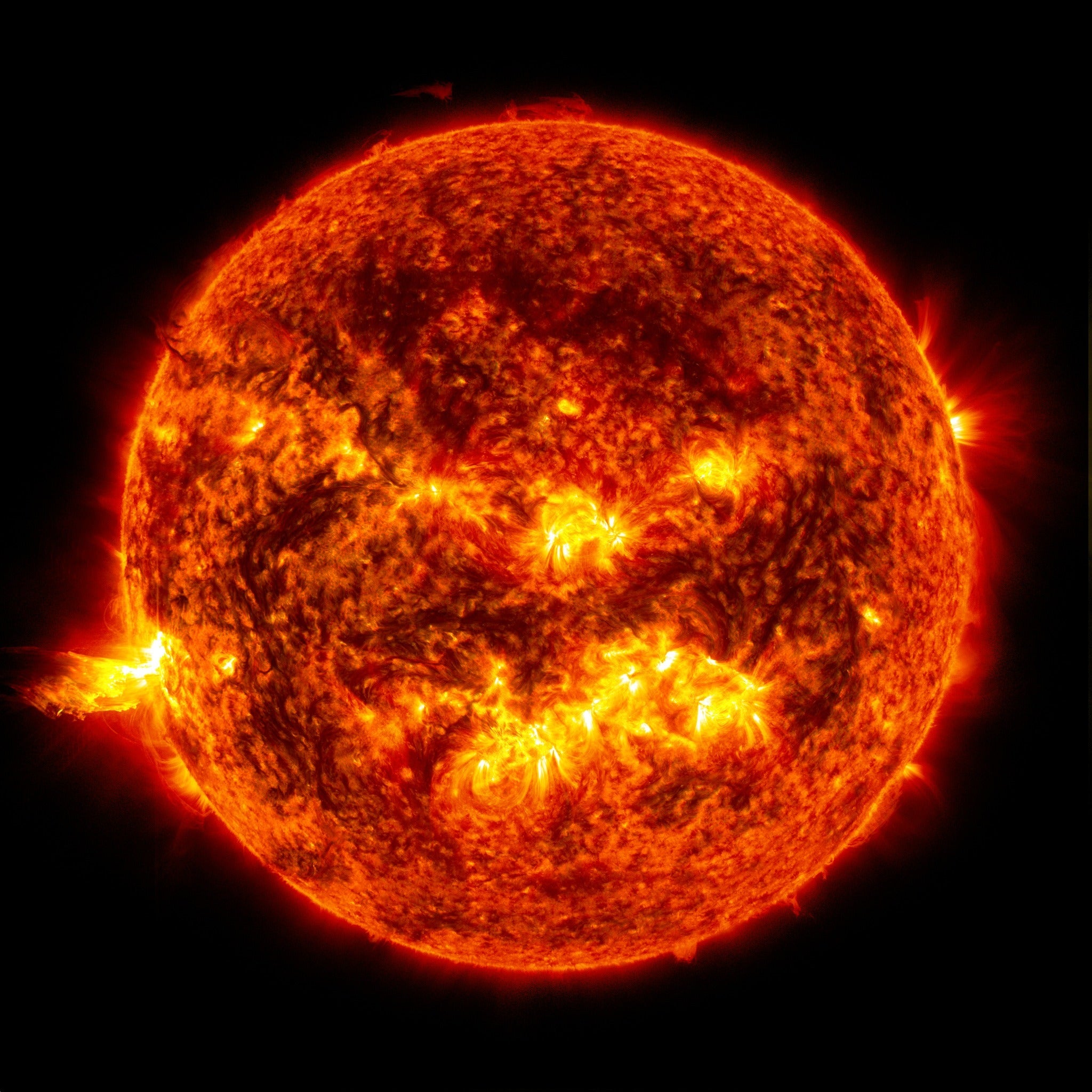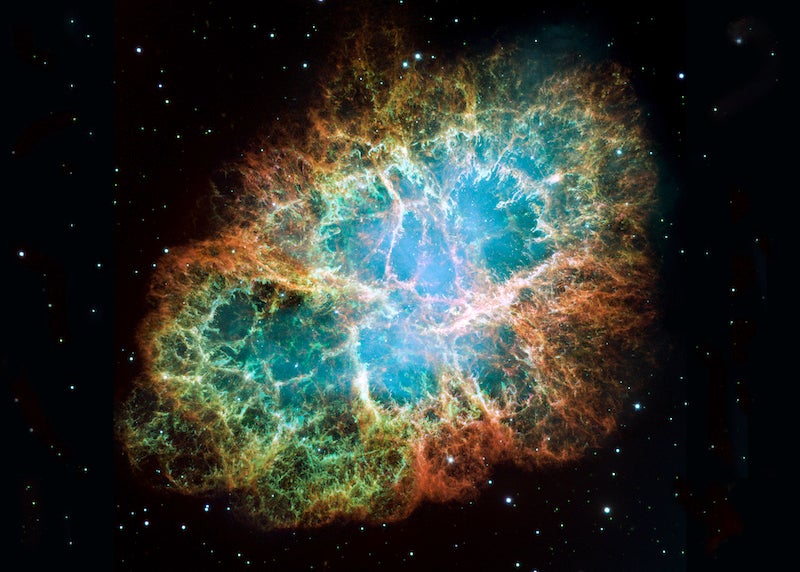Stars such as the Sun are like sedans, getting decent mileage from their hydrogen fuel while giving any life-bearing planets a safe and comfortable 10-billion-year ride through the cosmos.
Red dwarfs, weighing between 8 and 25 percent of the Sun’s mass, are the ultra-compact cars of the stellar production line. Although they have low horsepower, shining feebly at less than 0.1 percent of the Sun’s luminosity, these stars are highly efficient, burning nearly 100 percent of their hydrogen fuel during their 6-trillion-year lifetime (roughly 1,000 times longer than the Sun’s).
This high efficiency and resulting long life are due to the star’s convection zone. Similar to a lava lamp, hot material from the bottom of the zone bubbles to the top, cools, and sinks back to the bottom, efficiently mixing all the material in the layer.
In the Sun, the convective zone mixes only the outer 2 percent of the Sun’s mass, so fresh hydrogen fuel is not mixed into the Sun’s central nuclear engine. But a red dwarf’s convective core extends all the way from the star’s outer edge to its center, giving the star’s low-power nuclear furnace access to all of its hydrogen fuel.
This effective mixing also changes the evolution of a red-dwarf star. As the red dwarf ages, its composition changes slowly from almost all hydrogen to almost pure helium. This change causes the star to become brighter and slightly hotter while remaining the same radius. So, instead of becoming a red giant, the red dwarf will heat up gradually and turn yellow, giving only a subtle clue that the end is near. After exhausting its hydrogen supply, the star can’t produce its own energy and will cool slowly and fade as a low-mass white dwarf (see figure at left).
Brown dwarfs are the soapbox-derby cars of the stellar world. They never get hot enough to begin nuclear fusion and burn their own fuel, so all of their energy is provided by gravity. As the brown dwarf contracts from its parent nebula, gravitational energy heats the star.
Once the brown dwarf reaches a width the diameter of Jupiter, gas pressure prevents further collapse. Its gravitational energy exhausted, the brown dwarf cools and fades from view in a few billion years — KURTIS WILLIAMS, STEWARD OBSERVATORY, TUCSON, ARIZONA










